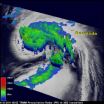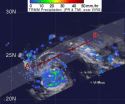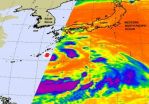Virus a potential future cancer medicine
2011-09-19
(Press-News.org) In a new project, researchers from LIFE – the Faculty of Life Sciences at the University of Copenhagen – document that the vesicular stomatitis virus (VSV) plays a previously unknown dual role in the prevention of a number of cancers. The new findings show that the virus both kills cancer cells and stops the expression of the molecules which certain types of cancer cells produce to hide from the immune system.
Certain types of cancer cells express far too many liquid immunostimulatory molecules, blocking the immune system's ability to recognise them, and enabling them to continue the development of cancer
"The overexpression seen in cancer types such as melanoma, testicular cancer, ovarian cancer and certain types of leukaemia significantly impairs the immune system, thereby reducing the patient's chance of recovery," says Associate Professor in immunology Søren Skov from LIFE.
Søren Skov is heading a research team which has just launched a major EU project to study the potential for improving cancer treatment by strengthening the immune system.
As part of the research project, PhD student Helle Jensen has infected human cancer cells with VSV.
"We were able to demonstrate that the virus kills cancer cells. The results also show that VSV effectively blocks the production of the immunostimulatory molecules which certain types of cancer overexpress to destroy the immune system and thus the chances of survival," Associate Professor Skov says.
This is a clear breakthrough and a giant leap towards better cancer treatment. The immune system will be able to more effectively stop the development of cancer when not sidelined. In addition, it is possible to mutate the virus and thus adapt it to the relevant type of cancer. There is thus a potential for a future alternative to chemotherapy, tailored to the individual patient, says Associate Professor Søren Skov.
"The next step will be clinical trials in humans. Such trials are already being conducted in the USA," says Helle Jensen, who has carried out the research project at LIFE in collaboration with the Faculty of Health Sciences at the University of Copenhagen and the National Veterinary Institute at the Technical University of Denmark (DTU).
INFORMATION:
Contact:
Associate Professor Søren Skov
Mobile: +45 28 75 76 79
Email: sosk@life.ku.dk
PhD student Helle Jensen
Mobile: +45 23 80 57 54
Email: hejen@life.ku.dk
END
ELSE PRESS RELEASES FROM THIS DATE:
2011-09-19
Recently published studies by a researcher in the Faculty of Medicine & Dentistry demonstrate that ALS – known as Lou Gehrig's disease – damages neurons in parts of the brain responsible for cognition and behaviour.
ALS, which stands for amyotrophic lateral sclerosis, is a fatal neurodegenerative disease that eventually leaves patients unable to move, breathe or swallow. Previous research has shown about 50 per cent of patients with ALS also have mild cognitive and behavioural changes, but between five and 15 per cent of patients can have severe changes resulting in dementia. ...
2011-09-19
GALVESTON, September 16, 2011 – Researchers have shown for the first time that the protein fortilin promotes growth of cancer cells by binding to and rendering inert protein p53, a known tumor suppressor. This finding by researchers at the University of Texas Medical Branch may lead to treatments for a range of cancers and atherosclerosis, which p53 also helps prevent, and appears in the current print issue of the Journal of Biological Chemistry.
"The p53 protein is a critical defense against cancer because it activates genes that induce apoptosis, or the death of cells. ...
2011-09-19
LA JOLLA, CA -- A "hidden" code linked to the DNA of plants allows them to develop and pass down new biological traits far more rapidly than previously thought, according to the findings of a groundbreaking study by researchers at the Salk Institute for Biological Studies.
The study, published today in the journal Science, provides the first evidence that an organism's "epigenetic" code - an extra layer of biochemical instructions in DNA - can evolve more quickly than the genetic code and can strongly influence biological traits.
While the study was limited to a single ...
2011-09-19
MADISON, WI, SEPTEMBER 16, 2011 -- Durum wheat is a valuable cereal crop widely used for human consumption in the United States, Canada, and several European countries. Scab or Fusarium head blight is one of the crop's most serious diseases, reducing its grain yield and quality. Current durum cultivars don't have resistance to this widespread disease.
While working on the Durum Germplasm Enhancement Project (DGE), Dr. Prem Jauhar and staff at the USDA-ARS Northern Crop Research Laboratory, Fargo, ND discovered that a diploid wheatgrass contains the genes needed for scab ...
2011-09-19
DURHAM, N.H. – Beginning Sunday, September 18, 2011 at NASA's launch facility in Fort Sumner, New Mexico, space scientists from the University of New Hampshire will attempt to send a balloon up to 130,000 feet with a one-ton instrument payload to measure gamma rays from the Crab Pulsar, the remains of a supernova explosion that lies 6,500 light years from Earth. The launch is highly dependent on weather and wind conditions, and the launch window closes at the end of next week.
The Gamma Ray Polarimeter Experiment (GRAPE), which was designed and built at the Space Science ...
2011-09-19
MADISON, WI, SEPTMEBER 12, 2011 -- Modifying soybean seed to increase phosphorus content can improve animal nutrition and reduce feed costs and nutrient pollution. However, further research is needed to commercialize this valuable technology. Knowledge of soybean and other crops such as maize suggest that reducing phytate, the principle storage form of phosphorus in plant tissue, in seeds reduces seed germination and emergence of seedlings in the field. In soybean, however, researchers debate whether this problem exists, and suggest that other factors may be the cause.
New ...
2011-09-19
EAST LANSING, Mich. — A research team at Michigan State University has developed a laser that could detect roadside bombs – the deadliest enemy weapon encountered in Iraq and Afghanistan.
The laser, which has comparable output to a simple presentation pointer, potentially has the sensitivity and selectivity to canvas large areas and detect improvised explosive devices – weapons that account for around 60 percent of coalition soldiers' deaths. Marcos Dantus, chemistry professor and founder of BioPhotonic Solutions, led the team and has published the results in the current ...
2011-09-19
VIDEO:
This animation of NOAA's GOES-13 satellite observations from Sept. 6 at 8:45 a.m. EDT through Sept. 16 at 7:45 a.m. EDT shows the movement of Hurricane Katia followed by Tropical...
Click here for more information.
Hurricane Maria joins twelve other hurricanes on record to make landfall in Newfoundland, Canada, and NASA satellite imagery revealed its inner strength.
The Tropical Rainfall Measuring Mission (TRMM) satellite passed over Hurricane Maria on Sept. ...
2011-09-19
When the Tropical Rainfall Measuring Mission (TRMM) satellite flew over Tropical Storm Sonca on Friday, Sept. 16 it found moderate rainfall mostly on the southern side of the storm. Chichi Jima can expect some of that rainfall over the weekend as Sonca passes east of the island.
TRMM passed over Tropical Storm Sonca and its precipitation radar instrument saw moderate rainfall occurring mostly on the southern side of the storm, while light-to-moderate rainfall was occurring throughout the storm. The southern edge of the storm had rainfall rates between .78 to 1.57 inches ...
2011-09-19
Tropical Storm Roke has changed in size and is starting to change in strength. Roke appears to be consolidating in infrared imagery from NASA's Aqua satellite.
Roke began its life as a monsoon depression with a large low-level circulation center that over time consolidated and organized. The eastern half of Tropical Storm Roke was seen in an infrared image from NASA's Aqua satellite AIRS (Atmospheric Infrared Sounder) on Sept. 15, and it showed a more consolidated center with strong convection and very cold cloud-top temperatures.
Cloud-top temperatures are important ...
LAST 30 PRESS RELEASES:
[Press-News.org] Virus a potential future cancer medicine



